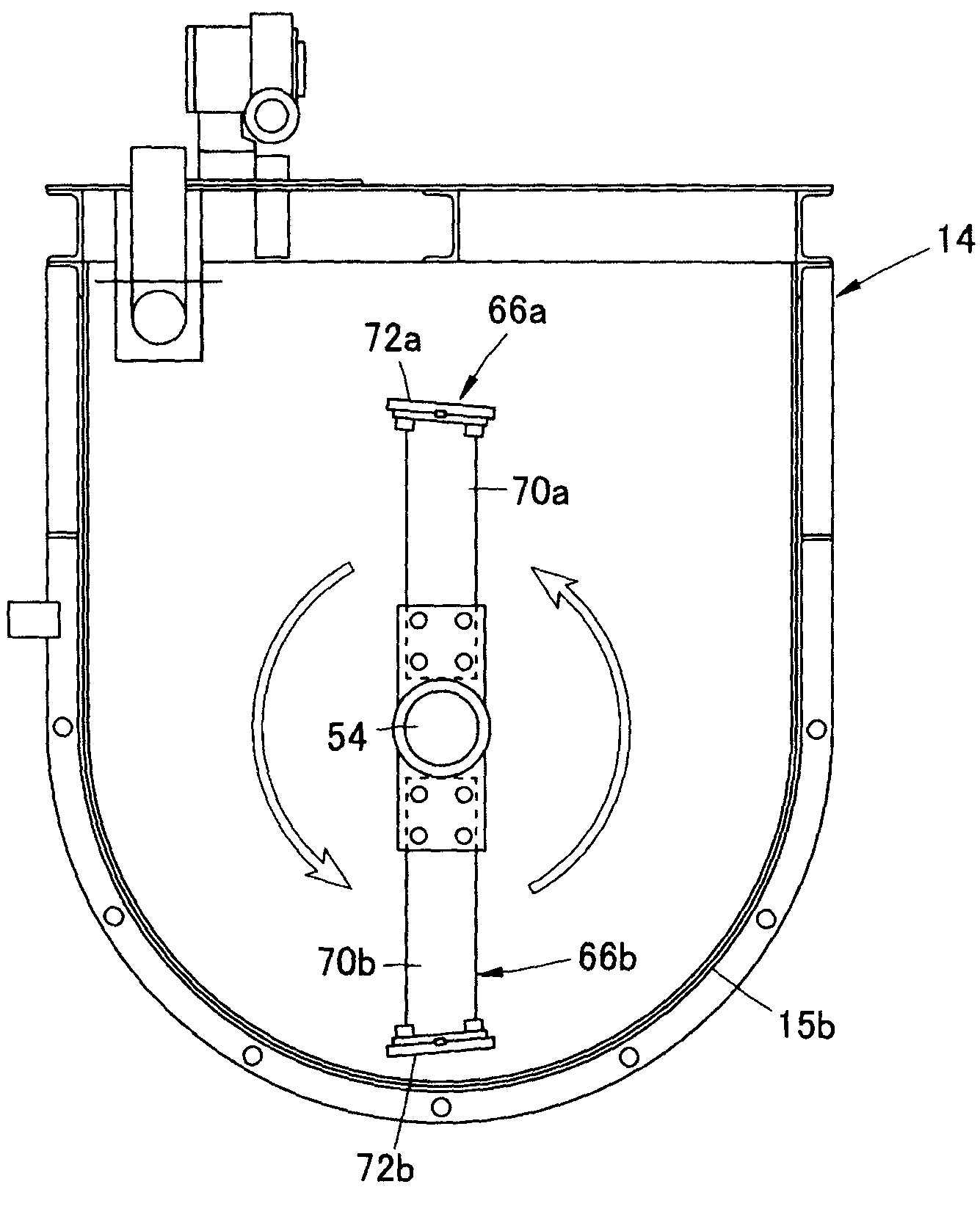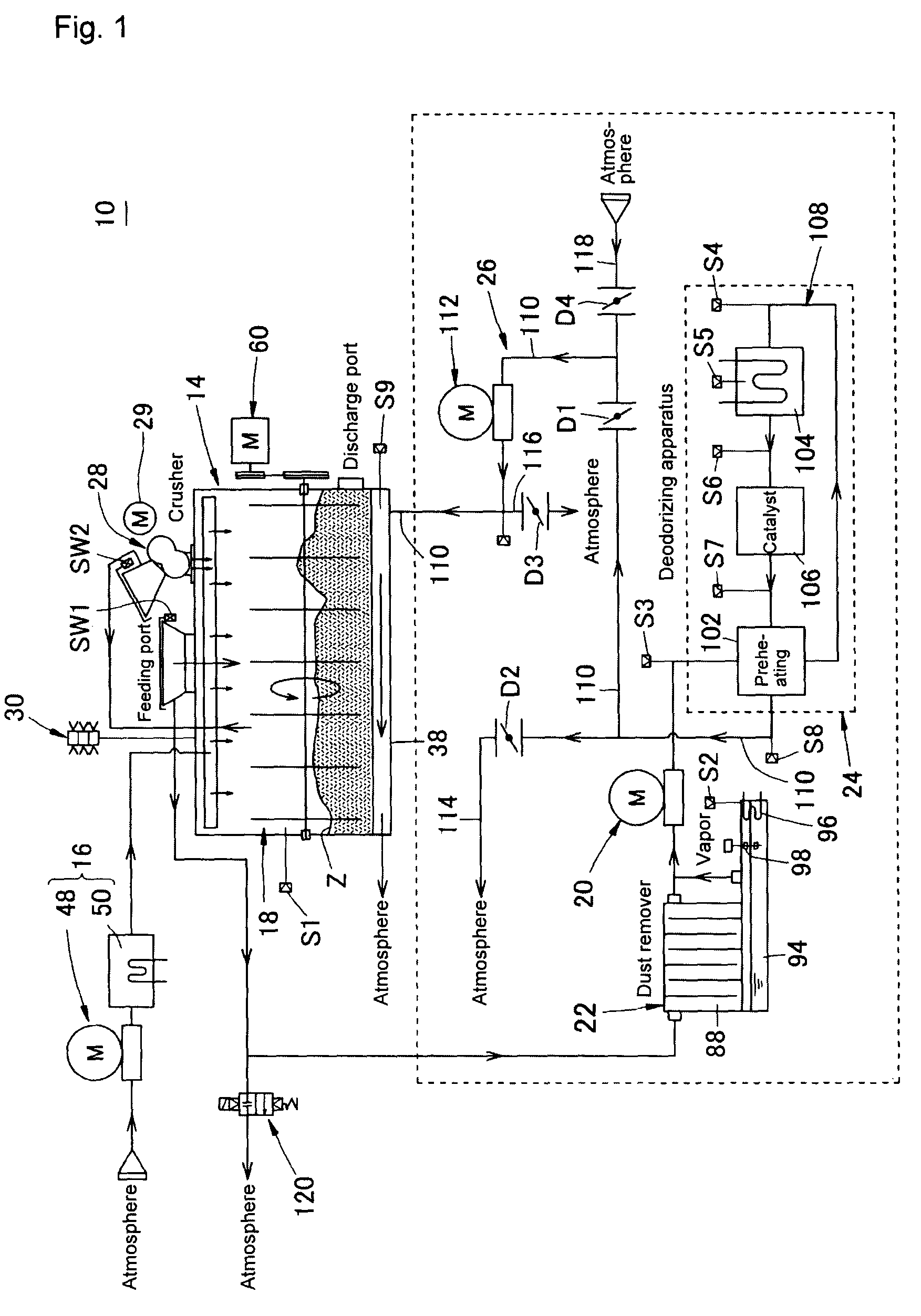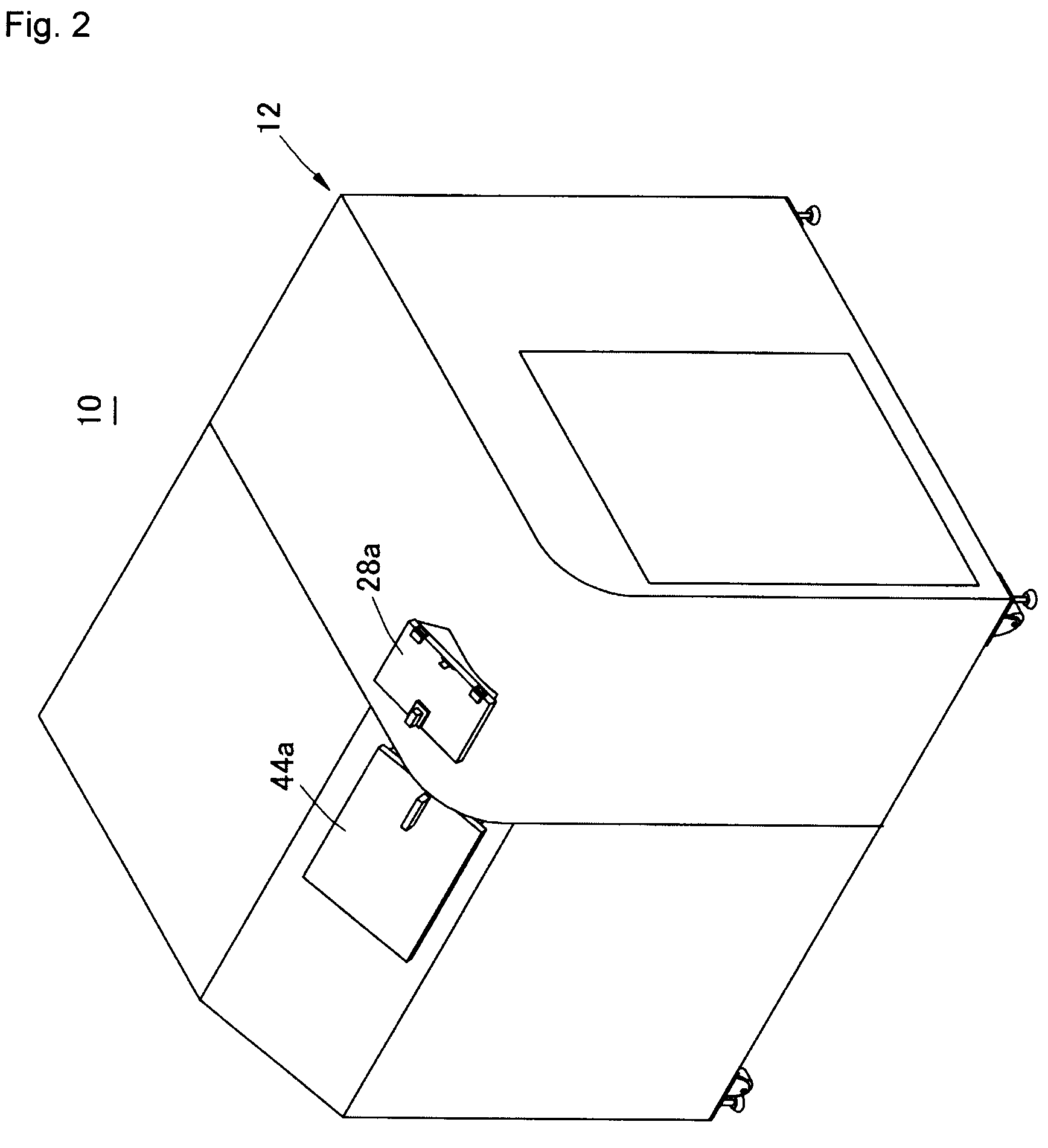Waste treatment apparatus
a technology of waste treatment and equipment, applied in the direction of biomass after-treatment, transportation and packaging, rotary stirring mixers, etc., can solve the problems of reducing the efficiency of agitating raw waste and other waste in the main body, raw waste and other waste cannot be agitated uniformly and efficiently, and the efficiency of agitating raw waste and other waste is not always high, so as to achieve efficient agitation and efficient agitation
- Summary
- Abstract
- Description
- Claims
- Application Information
AI Technical Summary
Benefits of technology
Problems solved by technology
Method used
Image
Examples
Embodiment Construction
[0055]In the waste treatment apparatus according to preferred embodiments of the present invention, subjecting waste including plastic waste, raw waste, waste such as paper, and other types of waste to volume reduction-annihilation treatment by decomposing the waste by microorganisms while the waste is efficiently agitated together can be achieved without separating, for example, raw waste and / or waste such as paper from waste such as plastic, in contrast to a conventional apparatus.
[0056]FIG. 1 is a flow diagram illustrating an example of a preferred embodiment of the waste treatment apparatus according to the present invention, and FIG. 2 is an outside view illustrating the example of the preferred embodiment of the waste treatment apparatus according to the present invention. FIG. 3 is a plan view illustrating the example of the preferred embodiment of the waste treatment apparatus according to the present invention, FIG. 4 is a front view thereof, FIG. 5 is a right side view the...
PUM
| Property | Measurement | Unit |
|---|---|---|
| inclination angle | aaaaa | aaaaa |
| thickness | aaaaa | aaaaa |
| temperature | aaaaa | aaaaa |
Abstract
Description
Claims
Application Information
 Login to View More
Login to View More - R&D
- Intellectual Property
- Life Sciences
- Materials
- Tech Scout
- Unparalleled Data Quality
- Higher Quality Content
- 60% Fewer Hallucinations
Browse by: Latest US Patents, China's latest patents, Technical Efficacy Thesaurus, Application Domain, Technology Topic, Popular Technical Reports.
© 2025 PatSnap. All rights reserved.Legal|Privacy policy|Modern Slavery Act Transparency Statement|Sitemap|About US| Contact US: help@patsnap.com



